Case Analysis OnInternational Trade & Investment Pattern Among Nations.
Question
Task:
The questions to be answered are;
Question 1: World Trade Overview and Gravity Model
In the 19th Century Britain was trading with countries from distant locations such as North America, Latin America, Africa and Asia. Today, Britain mostly trades with European countries. Examine the causes of the British changing trade pattern with reference to the Gravity Model.
Question 2: Resources and Trade: Heckscher-Ohlin (H-O) Model
How does the Ricardian model differ from the H-O theory in explaining international trade patterns among nations
Question 3: Economies of Scale, Imperfect Competition and International Trade
Trade need not be the result of comparative advantage but it can be a result of economies of scale. Discuss.
Question 4: International Factor Movements
Explain the effects of migration of labour between two nations. Use the figure below and the marginal product of labour concept to explain your answer.
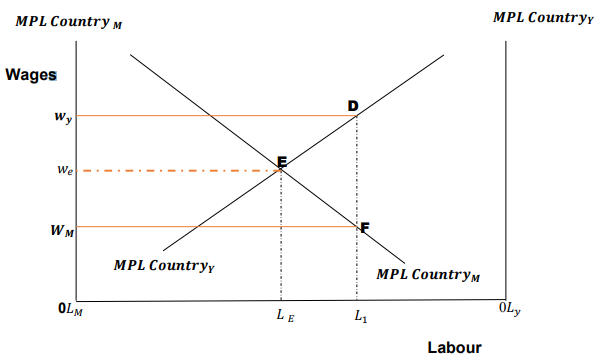
Question 5: Trade Policy in Newly Industrialized/Developing Countries
Infant Industry protection is a key solution for the growth of industrialization of developing countries. Discuss your answer by using the graph below and any other graph(s) that you can deem appropriate.
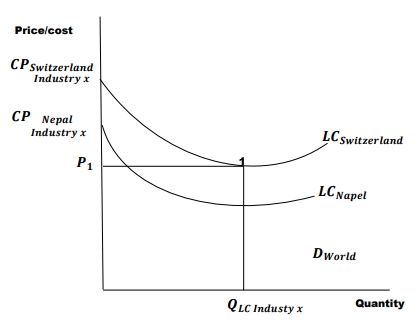
Question 6: Controversies in Trade Policy
After the Seattle 1999 World Trade Organization Ministerial Conference fiasco, in the next 2 years, large anti-globalization demonstrations rocked the International Monetary Fund and Work Bank in Washington. What was the anti-globalization movement goal- and was it right Explain you answer and where appropriate use figures.
Answer
Answer 1
Why Britain has changed the international trade pattern regarding Gravity model
Gravity Model has been developed by Jan Tinbergen during the year 1962 and according to this model, the relative economic size attracts two nations to trade and greater distance reduces the attractiveness (Stay and Kulkarni, 2016, p.35). In the 19th century, Britain focused on trade with countries of distant locations including North America, Latin America, Africa and Asia. The reason is that it was mutually beneficial. Furthermore, at that time the market was not highly competitive and the cost control was not an important technique. After the globalisation and liberalisation process, each country has identified the importance of applying the Gravity model. In the world of globalisation, the competition is very high in the market and this is why cost control has become most important to various nations. The Gravity model of international trade has considered trade cost in the bilateral trade agreement and hence, it can be stated that cost is the key factor to strengthen the trade practice between two nations (Duarte et al., 2018, p.565). The European Union was developed in 1993 with a common currency and it is considered a Free Trade Area (FTA). 16 European countries agreed to make the trade for developing the economic growth of their own countries. Hence, in the current era of globalisation, Britain has focused on the cost control process and this is why trade has been done with EU nations.
Britain has recently left the European Union and before leaving the EU, the country as belonging to the EU and hence, the UK has availed the advantage of cost in the case of trade with European nations. The main cause that is found in the case of changing the trade pattern of Britain is cost control and enhancing the competitive advantages. Furthermore, the Gravity model focuses on the cultural differences in international trade. Hence, in the case of the UK, it is identified that the trade with EU countries does not create any cultural barriers. However, trade with the countries of distant places would create cultural problems. It is clear from the Gravity model analysis that the trade policy of Britain with EU nations is easy to manage and the high-level competitive advantages can be gained by the nation. One of the major causes of shifting to trade with EU nations is the application of Brexit. The bilateral trade policy with European countries would help the country to develop good relationships with the European nations.
Answer2
How does the Ricardian Theory differ from H-O Theory concerning International Trade
As stated by Deb and Hauk, (2017, p.23), the Ricardian theory is the updated version of absolute advantage theory of Adam’s Smith. The theory of Ricardo has stated that technology has differentiated labour productivity. It implies that labour cannot produce comparative advantages without the difference in technology among nations. Hence, technological development is the key area of developing international trade. On the other hand, the Heckscher-Ohlin theory states that factors of production including labour and capital determine the competitive advantages (Zhang, 2017, p.135). In this theory, technological development is not mentioned properly and this is the difference between the H-O theory of International trade and Ricardian Theory. Secondly, it can also be stated that the theory of Ricardo does not focus on the capital and that has been mentioned in the Heckscher-Ohlin Theory. The key focus of the Ricardian Theory is it has considered technological development in the enhancement of labour productivity and it is said that technology can develop the comparative advantages between two nations.
The analysis of H-O and Ricardian Theory both reveals that a country cannot be self-sufficient in all areas of production. This is why the international bilateral trade agreement is made between two countries for enhancing economic growth. The Ohlin theory has stated that a country mainly focuses on the import of scarce factors for enhancing the effective development of the economy. The core differences between these two theories are mentioned below:
|
Ricardian Theory |
H-O Theory |
|
The Ricardian Theory of International Trade mainly focuses on the labour theory of value |
The H-O theory mainly focuses on the money/price theory |
|
The Ricardian theory has focused on the two nations, two products and one factor (2-2-1model) |
The Theory of Heckscher and Ohlin mainly considers two countries, two commodities and two factors (2-2-2) |
|
The difference in labour efficiency has been considered in the theory of Ricardo |
The difference in the factor supply has been considered in the Heckscher and Ohlin theory |
|
The gains from the trade have been mentioned in the Ricardian Theory |
The basis of trade is explained in the theory of Heckscher and Ohlin |
|
It is based on one market theory |
It focuses on the multi-market theory |
Table 1: Difference between Ricardian and H-O Theory
(Source: Developed by Author)
Answer 3
Trade is the result of Economies of Scale rather than Comparative Advantages Why
As depicted by De Roestet al., (2018, p.229), international trade is the result of economies of scale rather than comparative advantages. The reason is no-country would want to sell products unless the domestic demand is fulfilled. Hence, if the product is needed for both fulfilling domestic demand and international trade large scale production is essential at least cost which is considered as Economies of Scale. The huge specialized production is essential for supplying to the other nations and it would create mutual benefits between the two nations. In the case of economies to scale, the increasing returns to scale is an important factor. The reason is productivity would help to increase the returns to scale by decreasing average cost (Belaidet al., 2017, p.119). Hence, to make sufficient profit, it is essential to consider economies of scale and implement the concept of comparative advantage. It is clear from the overall study that the comparative advantage is the secondary matter in the international trade and primary result of trade in Economies of Scale.
In the case of a highly competitive market, economies of scale is an important matter and the reason is it ensures large scale production at average cost and it helps to make bilateral trade with other nations. On the other hand, in the imperfect competition also, the economies of scale provide effective results in the trade. Hence, without the application of the concept of economies of scale, international trade practice cannot be developed. As stated that by Karimi and Malekshahian, (2018, p.521), the comparative advantage is an important area in the case of international trade in addition to the economies of scale. The reason is without comparative advantage the trade agreement cannot be made between two countries. However, the economies of scale are the core factor in the case of an international trade agreement. Various countries can be identical in all respects in the case of production and it is possible while the concept of economies of scale is applied. For instance, the USA, Japan and other nations of the EU have focused on economies of scale for developing the balance of payment through export. This has made all countries identical in terms of production and they have strong competition in the international trade practice.
Answer4
Explaining the Effect of Migration of Labour between two nations
According to the view of Bortnyket al., (2018, p.51), the effect of migration of labour between two nations can be broadly classified into two categories including short-run effect and long-run effect. The migration of labour according to the industry requirements increases the industrial performance and output is increased in the long run. Furthermore, the competition level is improved while the production level is increased. On the other hand, the rental rate on capital and land can be increased in the short run as a result of the migration of labour. The long-run effect of migration of labour is considered more effectively rather than the short-run effect. The reason is development in the output is the important matter in the case of the long run and that has been ensured through the labour migration process (Vyshnyakov and Lavrenchuk, 2019, p.91). The migration process can be analysed based on the concept of the marginal product of labour. The concept MPL reveals that the output has been changed with the added unit of labour.
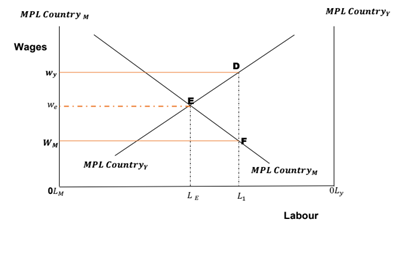
Figure 1: Marginal Productivity of Labour
(Source: From Question 4)
The above figure analysis depicts that the wages are increased while the demand for labour is increased in the competitive market. The MPL of country y and MPL of country x have attained equilibrium in point E. Hence, the intersection point E is the optimum point regarding the marginal productivity of labour. If the demand is increased but supply is less than demand, the equilibrium cannot be attained. On the other hand, if the supply exceeds the demand for labour, the equilibrium cannot be attained. Hence, the optimum level of MPL is essential to the two countries in production. The overall effect of migration of labour is mentioned below
If capital and land are not fixed, the output is developed with the migration of labour
The migration causes the increase in the home labour and best labour cannot be found sometimes
The increase in the home labour provides benefits in the short run as it provides benefits to both the countries as land and capital is fixed in the short run
The long-run development can be obtained while the land and capital can be increased in the future
Answer 5
Infant Industry protection is the key solution for the growth of industrialization in the developing nations
According to the view of Bogatzky, (2016, p.160), infant or small industries create huge employment opportunities in different countries all over the world. This is why; developing nations need to focus on increasing the tariffs to protect the domestic industry. The price of the products of the infant industry can be controlled by imposing tariffs on imported products. It helps to create new opportunities for the domestic industry and the infant industry can be grown easily. The overall industrial growth has been ensured based on the development of infant industry protection. Some economists have criticised the protection of the infant industry. According to their point of view, the excessive import in the foreign product would decrease the production performance of the country in the long run. The low-income elasticity and price volatility are two key reasons that can damage the industrial growth of a nation in the long run.
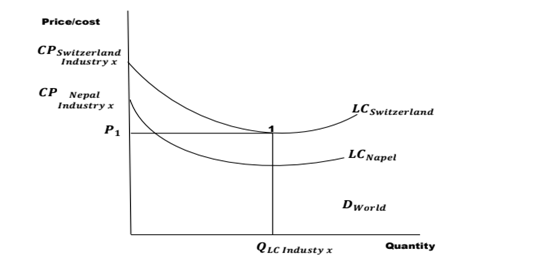
Figure 2: Infant Industry growth and industrialization in developing nations
(Source: From question 5)
The above figure repeals that quantity is measured in the horizontal axis and the price or cost has been measured in the vertical axis. The equilibrium of Switzerland is higher than Nepal and it depicts that industrial growth is higher in Switzerland.
In the world of globalization, it is found that tariff protection has a core disadvantage regarding welfare loss. Hence, it is clear that tariff protection would create loss to various countries in the long run. International trade is essential in the world of globalisation for enhancing the economic as well as industrial development. Hence, it is clear from the analysis that infant industry growth and import both are important to ensure industrial development. The development of the infant industry provides huge revenues to the government of different countries and the economic growth of its own country is enhanced. Although the large industries have a significant role in the economic development of a nation, the importance of infant industry cannot be denied. The development of the infant industry has been realised by almost all nations throughout the globe. In the case of developing countries, the essentiality of the infant industry is gradually growing for employment. However, in the case of developed nations, the importance is comparatively lower.
Answer 6
What was the anti-globalisation movement goal and explain your answer?
The Seattle WTO protest against the globalisation process during the year 1999 was a remarkable movement against globalisation and liberalisation. The reason is globalisation breaks the backbone of the economy of developing and underdeveloped nations. The developed countries become more developed and poor countries become poorer. During November 1999 around 10000 Protesters in the USA had surrounded the paramount theatre and convention centre. The key motive of anti-globalisation social activists is to seek changes in the society and eliminate inequality (Smith, 2014, p.1). They believe that economic inequality creates poverty and hence, it is the responsibility of people to protect the lives of all citizens within the nation. The main goal of anti-globalisation in the year 1999 was to maintain the economic stability of the nation. The message they have sent to the International monetary fund and the World Bank. The protesters have opined that economic inequality is increased as a result of the globalisation process and the life uncertainty is increased. This was the first phase of protest against globalisation after the starting of the process (Kumar, 2017, p.319). They have tried to develop the dark side of the globalisation process and it was remarkable in history.
There is a controversy regarding the effectiveness of the movement as all people did not take it equally. Practical and open-minded people or economists have considered the globalisation positively as it would help to enhance industrial development. On the other hand, social activists have considered the dark side of the globalisation and liberalisation process. According to their point of view, globalisation would create more unemployment and developing nations would face major problems. The issue that has been raised in Seattle 1999 is true and that has been realised by the entire world today (Almeida and Chase-Dunn, 2018, p.209). However, some people have focused on some positive sides of globalisation only and they do not want to consider other issues.
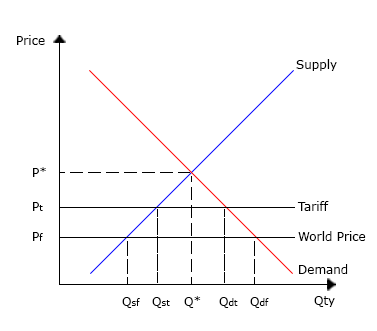
Figure 3: Tariff in Global Trade
(Source: Almeida, P. and Chase-Dunn, 2018, p.191)
Based on the above figure, it is found that to make protection of foreign products in the domestic market, the huge tariff charging is important. Hence, indirect industrial protection is an important matter in the case of the globalisation process. From the diagrammatic analysis, it is clear the competition in the domestic market is increased after globalisation and the small industry growth is saturated.
References
Almeida, P. and Chase-Dunn, C., 2018.Globalization and social movements. Annual Review of Sociology, 44, pp.189-211.
Belaid, S., Mrad, S.B., Lacoeuilhe, J. and Petrescu, M., 2017. Are brand benefits perceived differently in less developed economies A scale development and validation. Journal of Marketing Analytics, 5(3-4), pp.111-120.
Bogatzky, N., 2016. Socialist industrialization and Infant industry argument. Economic lessons, perspectives and challenges from the balkans, p.160.
Bortnyk, N., Didkivska, G. and Tylchyk, V., 2018. The impact of international labour migration on the development of states under globalization: economic and legal aspects. Baltic Journal of Economic Studies, 4(2), pp.47-52.
De Roest, K., Ferrari, P. and Knickel, K., 2018. Specialisation and economies of scale or diversification and economies of scope Assessing different agricultural development pathways. Journal of Rural Studies, 59, pp.222-231.
Deb, K. and Hauk, W.R., 2017. RCA indices, multinational production and the Ricardian trade model. International Economics and Economic Policy, 14(1), pp.1-25.
Duarte, R., Pinilla, V. and Serrano, A., 2018. Factors driving embodied carbon in international trade: a multiregional input–output gravity model. Economic Systems Research, 30(4), pp.545-566.
Karimi, M.S. and Malekshahian, M., 2018.Ricardian Comparative Advantage: Impact of Specialization on the Exportation of Products in ASEAN Countries. Annals of Economics and Finance, 19(2), pp.473-522.
Kumar, P., 2017. Liberalization: A Critical View. International Journal of Engineering and Management Research (IJEMR), 7(2), pp.319-320.
Smith, N. 2014.The Dark Side of Globalization: Why Seattle's 1999 Protesters Were Right, The Atlantic. Available at: https://www.theatlantic.com/business/archive/2014/01/the-dark-side-of-globalization-why-seattles-1999-protesters-were-right/282831/ (Accessed: 6 October 2020).
Stay, K. and Kulkarni, K.G., 2016. The gravity model of international trade, a case study: the United Kingdom and her trading partners. Amity Global Business Review, 11, pp.28-39
Vyshnyakov, V.M. and Lavrenchuk, I.V., 2019. Analysis of labor migration in Ukraine and economic effects of migration. Bulletin of Zaporizhzhia National University.Economic Sciences, (4 (44)), pp.87-92.
Zhang, W.B., 2017. Endogenous wealth and knowledge in Heckscher-Ohlin theory. International Journal of Development and Conflict, 7(2), pp.119-137.












